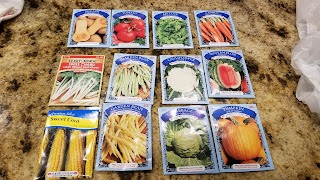Creating a Chicken Compost System, Upgrading the Brooder, and Planning a Chicken-Friendly Garden
3/29/18
Creating a Chicken Compost System, Upgrading the Brooder, and Planning a Chicken-Friendly Garden
Life on the homestead is always eventful, and today was no exception! From building a chicken compost bin to moving baby chicks into a larger brooder, and dreaming of a garden designed with chickens in mind, it’s been a day full of productivity and inspiration. Let’s dive into the details and share some tips along the way!
Building a Chicken Compost Bin: The First Step Toward Sustainability
Composting is a fantastic way to recycle organic waste and create nutrient-rich soil. Today, I built a one-bay chicken pallet compost bin to kickstart our garden project. Composting with chickens is a win-win—while breaking down food scraps and yard waste, chickens help aerate the pile as they scratch and peck, speeding up decomposition.
What You Need for a Pallet Compost Bin:
- 4 wooden pallets (free or inexpensive from local businesses)
- Zip ties, screws, or nails to secure the structure
- A tarp or cover to protect the compost from heavy rain
Composting not only reduces waste but also enriches your garden soil. Here's why it’s particularly beneficial for chicken owners:
- Recycling Chicken Waste: Used bedding (straw, wood shavings) and droppings are rich in nitrogen, a key component of compost.
- Natural Fertilizer: The finished compost can be spread in your garden, providing essential nutrients for plants.
- Chicken Enrichment: Chickens love scratching through compost piles, finding worms and bugs.
Planning the Chicken Garden
Once the compost is ready, it will be used to enrich the soil for our new garden. I’ve asked my neighbor to clear a 10x10-foot area of Bermuda grass, which will be the future site of a chicken-friendly vegetable garden.
What is a Chicken Garden?
A chicken garden is a space where plants are grown not only for humans but also to provide fresh, nutritious food for your flock. Chickens love leafy greens, tomatoes, squash, and more. They’ll eat the produce and the plants, creating a sustainable loop when combined with composting.
Pro Tip: Use chicken-friendly plants that grow quickly, like kale, Swiss chard, and sunflowers. These crops can withstand frequent pecking.
Choosing Seeds for the Garden
I’m thrilled to start planting, especially since I found vegetable seeds for just $0.20 per pack! Here’s what I’m planning to grow:
- Carrots
- Spinach
- Zucchini
- Pumpkins
- Lettuce
Even if the soil isn’t perfect, the compost and chicken activity will improve it over time. Plus, the garden will be a shared space where chickens can forage, and we can enjoy the leftover bounty.
Moving Baby Chicks to a Bigger Brooder
Another big task today was upgrading the baby chicks’ living situation. The small brooder in our kitchen had become cramped for the 32 chicks, so it was time to move them into a larger space.
I reused a trough previously used for cattle. It’s spacious, easy to clean, and perfect for growing chicks. After setting it up with fresh bedding, food, and water, I moved the little ones in—and they couldn’t be happier!
The Importance of Proper Brooder Size
As chicks grow, they need more space to move, explore, and develop healthy behaviors. Overcrowding can lead to stress, feather pecking, and slower growth.
Brooder Space Guidelines:
- 0-4 weeks: At least 1 square foot per chick
- 4-8 weeks: Increase to 2-3 square feet per chick
DIY Chicken Perch for the Brooder
While watching the chicks play, I realized they needed a perch. Chickens naturally enjoy roosting, even as babies. I scavenged some small logs and built a rustic perch using screws and a drill. The chicks loved it immediately, and it’s a great way to encourage natural behaviors.
Enrichment Ideas for Growing Chicks
Keeping chicks entertained and active is crucial for their development. Here are a few enrichment ideas:
- Perches: Encourage climbing and balance.
- Toys: Add shiny objects or safe hanging items for them to peck at.
- Treats: Offer occasional healthy treats like scrambled eggs or mealworms.












Comments
Post a Comment